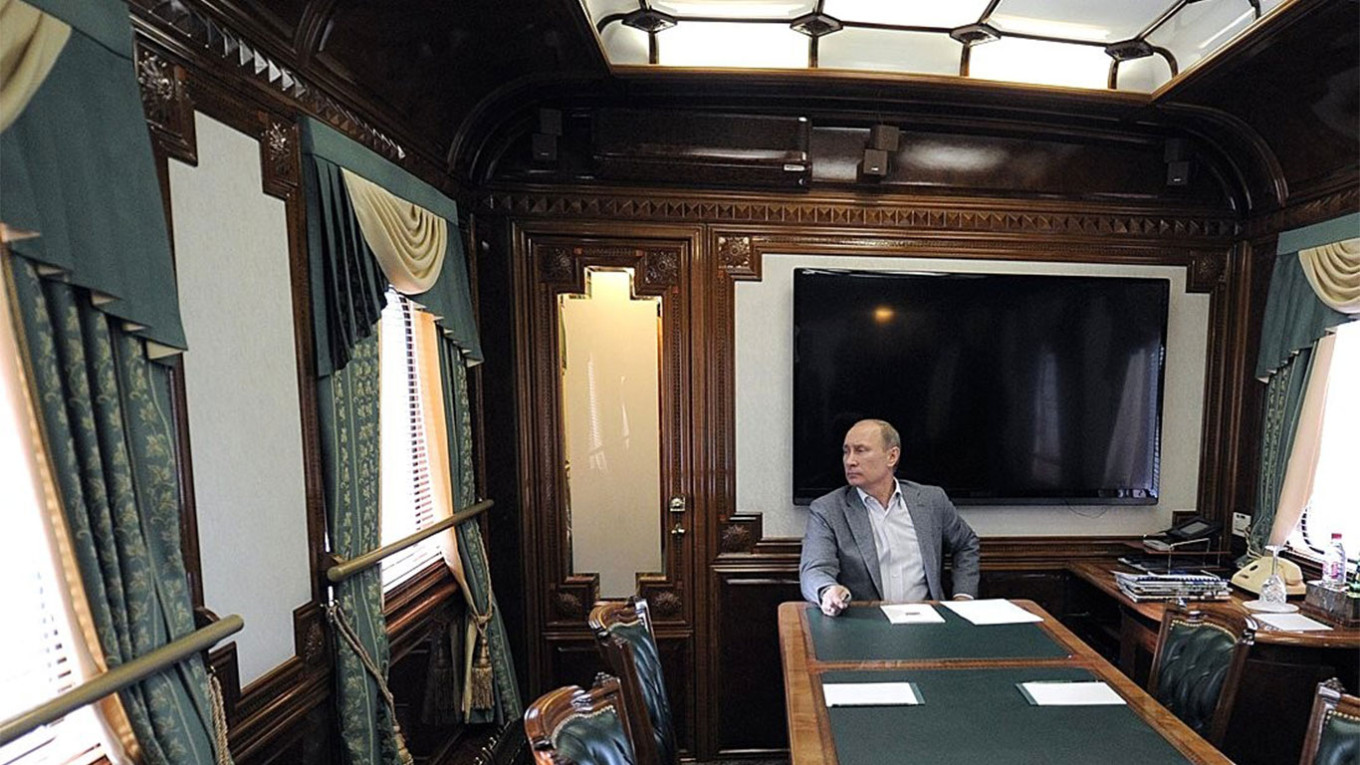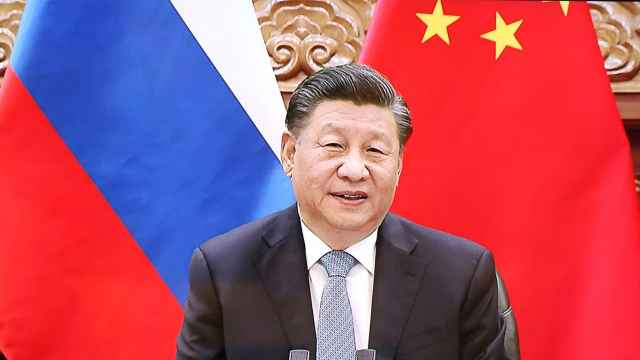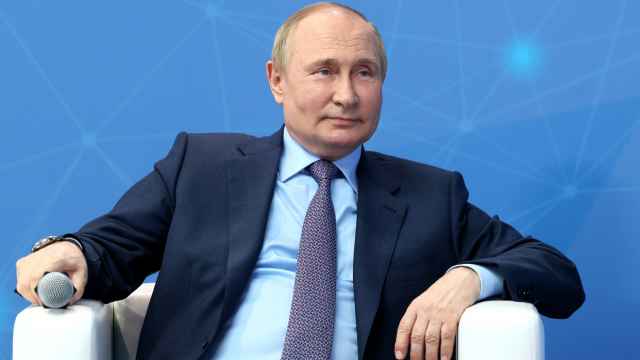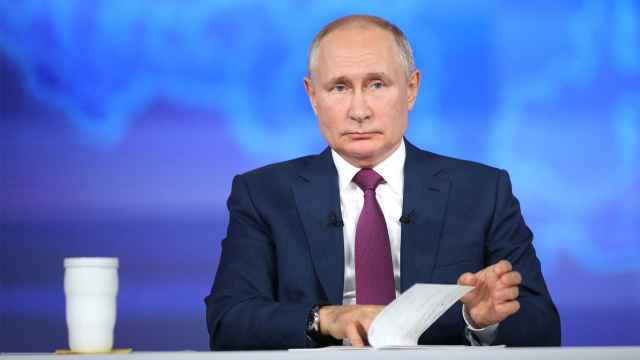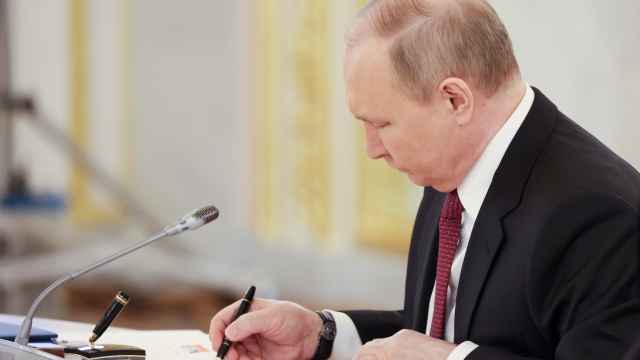Russian President Vladimir Putin has traveled to and from his residences on special armored trains using exclusively built stations since he ordered the invasion of Ukraine, according to new investigations by independent media.
The reports’ authors link Putin’s choice of transportation to his apparent wish to avoid tracking services and his distrust of the presidential air fleet’s security against potential attacks.
“After the outbreak of the war, in February-March [2022], he began to use the [armored] train very actively, especially to get to his residence in Valdai,” the Dossier Center investigative website quoted an unnamed source close to the Kremlin as saying Monday.
The Dossier Center is funded by exiled former oligarch and Kremlin critic Mikhail Khodorkovsky.
The outlet said Putin’s armored train, though nearly indistinguishable from regular trains, is marked by a larger number of locomotives, axles and encased communications antennas.
The train is reportedly comprised of a presidential car with a bedroom and a study for meetings, a car for Putin’s entourage and a separate special communications car. Its schedule is tailored to allow the train to reach maximum speeds and avoid unwanted stops.
With an estimated price tag of 1 billion rubles ($13.5 million), Putin’s armored train reportedly started being outfitted in 2014 and actively used in the late summer of 2021.
The Dossier Center linked the train carrier’s offshore-based ownership structure to banker Yury Kovalchuk, a close Putin ally who also reportedly manages Putin's widely speculated palace and other assets.
A separate investigation by the Proekt news site reported Tuesday that exclusive railway tracks and train stations have been built near three of Putin’s known residences to accommodate his armored train.
Satellite images showed one fenced-off station with a network of surveillance cameras a walking distance away from Putin’s official residence in Novo-Ogaryovo outside Moscow in at least 2015, Proekt said.
Another fenced-off, dead-end train station appeared near Putin’s Bocharov Ruchey summer residence in the southern resort city of Sochi in 2017, Proekt reported, citing satellite images.
The images reportedly showed a third guarded train station with a helipad appearing near the Novgorod region village of Dolgiye Borody, the closest populated area to Putin’s secretive Valdai residence, in 2019.
Putin’s armored train itself is based at a VIP section — separated by a high fence and reinforced with barbed wire — of the Kalanchyovskaya railway station in central Moscow, Proekt said.
Observers were quick to point out the similarities between the Russian president’s alleged preference for armored train travel to that of North Korean leader Kim Jong Un.
A Message from The Moscow Times:
Dear readers,
We are facing unprecedented challenges. Russia's Prosecutor General's Office has designated The Moscow Times as an "undesirable" organization, criminalizing our work and putting our staff at risk of prosecution. This follows our earlier unjust labeling as a "foreign agent."
These actions are direct attempts to silence independent journalism in Russia. The authorities claim our work "discredits the decisions of the Russian leadership." We see things differently: we strive to provide accurate, unbiased reporting on Russia.
We, the journalists of The Moscow Times, refuse to be silenced. But to continue our work, we need your help.
Your support, no matter how small, makes a world of difference. If you can, please support us monthly starting from just $2. It's quick to set up, and every contribution makes a significant impact.
By supporting The Moscow Times, you're defending open, independent journalism in the face of repression. Thank you for standing with us.
Remind me later.


